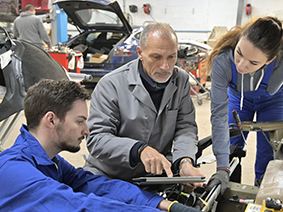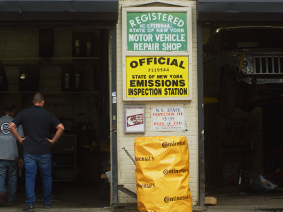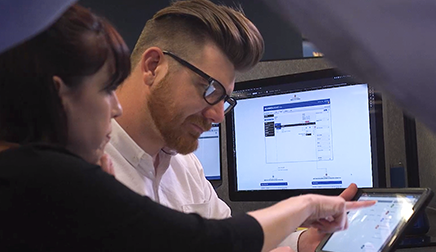Vehicle: 2017 Honda Civic Sedan, L4-1.5L Turbo (L15B7), Automatic Transaxle
Mileage: 23,668
Problem: A 2017 Honda Civic was in a minor collision but sat for months in the Collision shop awaiting authorization for repairs. The vehicle was finally repaired but the battery had gone dead in the interim. After the battery was replaced, the Civic started and ran fine but numerous diagnostic trouble codes (DTCs) were discovered in the “post-scan” of the vehicle. The “Pre-scan” had revealed no DTCs. The technician retrieved the following codes:
- U3000-54 – Vehicle Stability Assist (VSA) Sensor Calibration is Not Completed
- C0077-78 - Low Tire Air Pressure
- C0051-54 - Steering Angle Neutral Position Learning Incomplete
- U0416-68 - VSA System Malfunction
- B1646 - Driver's Door LF Antenna Circuit Open
- B1648 - Passenger's Door LF Antenna Circuit Open
- B1227-05 - Outside Air Temperature Sensor Circuit Open
Details: A complete inspection of the vehicle verified that there were no disconnected, crossed or damaged connections or wiring. All ground connections were secure. The collision shop called ALLDATA Tech-Assist. Due to the extended time the vehicle sat with a dead battery, the Tech-Assist consultant suggested re-flashing all the effected modules.
Although a new battery started the engine and provided the correct voltage to the electrical system, the modules had already stored DTCs. (NOTE: Many late model vehicle control modules will generate DTCs if the battery is left to completely discharge. Even the remote entry key fob may be disabled).
Side Note: The collision shop made the right call when they replaced the battery and not just trying to recharge it. When a vehicle battery’s voltage drops to below 10.5 volts for an extended period of time, the battery is considered to be fully discharged and can incur irreversible damage. While normal sulfation is reversible, excessively draining a battery or leaving it in a state of discharge, allows the soft lead sulfate to crystallize. Crystallized lead sulfate remains on the plates and cannot return to the electrolyte solution, which permanently diminishes the battery’s capacity.
Confirmed Repair: The collision shop brought the Civic to the dealer and had all the effected modules re-flashed. All the DTCs were cleared and did not return. Fixed!
The ALLDATA Tech-Assist team fields cases like this every day. See how Tech-Assist can help your shop save time and money with on-call diagnostic support from ASE-certified Master Technicians. More Tech Tips
Not an ALLDATA customer? For access to this valuable experience-based repair data and reliable OEM information, start a free trial today.
If you would like to read more articles like this one please subscribe to ALLDATA News.








